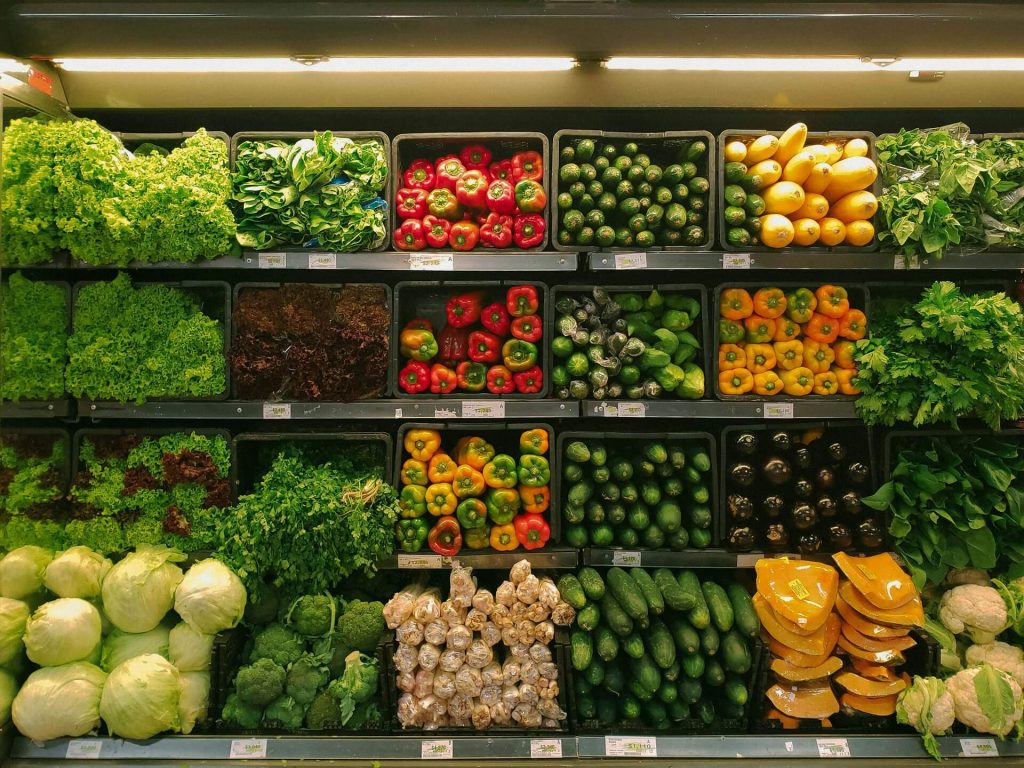As a student, maintaining a healthy diet can sometimes feel like cracking a code. Balancing classes, assignments, and extracurricular activities leaves little time to focus on what we eat. However, prioritizing a healthy diet is essential for our overall well-being and academic success. In this article, I’ll share 10 insider tips that have helped me navigate a healthy diet as a student.
Why a Healthy Diet is Important for Students
A healthy diet plays a crucial role in supporting our physical and mental well-being. As students, we need proper nutrition to fuel our bodies and minds, helping us stay focused and perform at our best. A balanced diet provides the necessary nutrients, vitamins, and minerals that our bodies require for growth, development, and optimal functioning.
By maintaining a healthy diet, we can:
- Improve concentration and cognitive function, enhancing our ability to learn and retain information.
- Boost energy levels, preventing fatigue and promoting productivity throughout the day.
- Strengthen the immune system, reducing the risk of illnesses and ensuring fewer sick days.
- Enhance mood and mental well-being, supporting overall emotional stability and reducing stress.
My Personal Journey with Healthy Eating
Like many students, I initially struggled with maintaining a healthy diet. Late-night study sessions, fast food temptations, and limited cooking skills made it challenging to make nutritious choices. However, through trial and error, I discovered strategies that worked for me.
I began by educating myself about the importance of healthy eating habits and researching different weight loss diet plans. I learned about the benefits of incorporating more fruits, vegetables, and whole grains into my meals. Gradually, I started experimenting with simple and nutritious recipes that fit my busy student lifestyle.
By implementing small changes, such as planning my meals ahead of time, incorporating more home-cooked meals, and finding healthy snacks, I was able to transform my eating habits. I also realized the importance of developing a body care routine that included nourishing my body from the inside out.
In sharing my journey and the tips that have helped me, I hope to inspire other students to prioritize their well-being through healthy eating. Remember, it’s not about perfection, but rather making conscious choices that fuel your body and support your academic success. Let’s dive into the insider tips that will help you crack the code to a healthy diet as a student.
Tip 1: Plan Ahead for Success
As a student, it can be challenging to prioritize healthy eating amidst a busy schedule. However, with a little planning and preparation, you can set yourself up for success in maintaining a healthy diet. Here are some tips on the importance of meal planning and how to effectively incorporate it into your routine.
Importance of Meal Planning
Meal planning plays a crucial role in ensuring that you have nutritious meals readily available throughout the week. By taking the time to plan your meals in advance, you can avoid relying on unhealthy fast food options or reaching for convenient but less nutritious snacks. Here are some key reasons why meal planning is important:
- Saves time: Planning your meals in advance helps you save time by reducing the need for last-minute decision making and food preparation. It allows you to streamline your grocery shopping and cooking process, making it more efficient.
- Promotes healthier choices: When you plan your meals ahead of time, you have the opportunity to make conscious and healthier food choices. This allows you to incorporate a variety of nutrient-dense foods into your diet, ensuring you meet your nutritional needs.
- Saves money: Meal planning can help you save money by reducing food waste and minimizing impulse purchases. By having a well-thought-out grocery list, you can stick to your budget and avoid unnecessary spending.
Tips for Effective Meal Planning
Now that you understand the importance of meal planning, let’s explore some tips to help you effectively incorporate it into your routine:
- Set aside dedicated time: Block off a specific time each week to plan your meals. This could be on a Sunday afternoon or any other day that works best for you. Use this time to decide on your meals, create a grocery list, and prepare any ingredients in advance.
- Consider your schedule: Take into account your schedule for the upcoming week when planning your meals. Consider days when you may have more time to cook and days when you may need quick and simple meal options.
- Variety is key: Aim to include a variety of foods from different food groups in your meal plan. This ensures that you get a wide range of nutrients and keeps your meals interesting and enjoyable.
- Prep in advance: Whenever possible, prep ingredients or even full meals in advance. This can include washing and chopping vegetables, marinating meat, or cooking grains and beans. Prepping ahead of time saves you time and effort during busy weekdays.
- Make use of leftovers: Plan meals that can be easily repurposed into leftovers. This way, you can cook larger batches and have ready-made meals for the next day or two, reducing the need for continuous cooking.
- Be flexible: While it’s important to have a plan, be flexible and open to changes. Life can be unpredictable, and it’s okay to deviate from the plan occasionally. Adapt your meal plan as needed, and don’t be too hard on yourself if things don’t always go according to plan.
By incorporating meal planning into your routine, you can make healthier food choices, save time and money, and cultivate a positive relationship with food. Remember to check out our article on healthy eating habits for more tips and insights on maintaining a balanced diet as a student.
Tip 2: Master the Art of Grocery Shopping

As a student, mastering the art of grocery shopping is key to maintaining a healthy diet. By building a healthy shopping list and implementing smart strategies, you can ensure that you have nutritious options readily available at all times.
Building a Healthy Shopping List
Building a healthy shopping list is the foundation of successful grocery shopping. Here are some key components to consider when creating your list:
- Fresh Fruits and Vegetables: Aim to include a variety of colorful fruits and vegetables in your shopping list. They are rich in essential vitamins, minerals, and antioxidants that support your overall health. Check out our article on incorporating fruits and vegetables for more ideas.
- Whole Grains: Opt for whole grain products such as whole wheat bread, brown rice, and whole grain pasta. These provide fiber, vitamins, and minerals, and help maintain steady energy levels throughout the day.
- Lean Protein Sources: Include lean protein sources like chicken, fish, tofu, beans, and lentils. These are important for muscle growth and repair. If you follow a vegetarian or vegan diet, explore our article on vegetarian diet benefits for protein-rich plant-based options.
- Dairy or Dairy Alternatives: Choose low-fat dairy products or dairy alternatives like almond milk or soy milk. These provide calcium and other essential nutrients for strong bones and teeth.
- Healthy Fats: Incorporate sources of healthy fats such as avocados, nuts, seeds, and olive oil. These fats are important for brain function and overall well-being.
Smart Strategies for Grocery Shopping
In addition to creating a healthy shopping list, implementing smart strategies can optimize your grocery shopping experience. Consider the following tips:
- Stick to the Perimeter: The perimeter of the grocery store is typically where the fresh produce, lean proteins, and dairy products are located. Focus on these areas to fill your cart with nutritious options.
- Read Labels: Take the time to read labels and understand the ingredients and nutritional content of the products you are purchasing. Look for items with minimal added sugars, sodium, and unhealthy fats.
- Shop with a Full Stomach: Avoid grocery shopping on an empty stomach to prevent impulse purchases of unhealthy snacks. When you’re hungry, it’s easier to be tempted by less nutritious options.
- Buy in Bulk: Consider buying non-perishable items in bulk to save money and reduce packaging waste. This is especially beneficial for items like whole grains, nuts, and seeds.
- Plan for Leftovers: Plan your meals and recipes in a way that allows for leftovers. This can help you save time and money by utilizing ingredients efficiently.
By building a healthy shopping list and implementing smart strategies, you can make the most of your grocery shopping trips and set yourself up for success in maintaining a healthy diet as a student. For more tips on healthy eating habits, check out our article on healthy eating habits.
Tip 3: Make Time for Breakfast
As a student, it can be tempting to rush out the door in the morning without having breakfast. However, making time for a nutritious breakfast is essential for starting your day off right. In this section, we will explore the benefits of a nutritious breakfast and provide quick and easy breakfast ideas for busy students.
Benefits of a Nutritious Breakfast
Eating a healthy breakfast has numerous benefits for students. It provides your body with the necessary fuel and nutrients to kickstart your day and support optimal brain function. Here are some key benefits of having a nutritious breakfast:
- Improved Concentration: A balanced breakfast helps enhance your focus and concentration, enabling you to perform better academically.
- Increased Energy: Breakfast replenishes your glycogen stores and provides a steady release of energy throughout the morning, keeping you alert and energized.
- Enhanced Memory: A nutritious breakfast supports memory and cognitive function, which can be particularly beneficial during exams and study sessions.
- Better Nutrient Intake: Having a well-rounded breakfast allows you to incorporate essential nutrients like fiber, vitamins, and minerals into your diet, promoting overall health.
Quick and Easy Breakfast Ideas for Busy Students
Finding time for breakfast can be challenging when you’re rushing to get to class. However, with a little planning and creativity, you can enjoy a healthy breakfast even on busy mornings. Here are some quick and easy breakfast ideas for students:
| Breakfast Idea | Description |
|---|---|
| Overnight Oats | Prepare a jar of oats, milk, and your favorite toppings the night before. In the morning, grab and go! |
| Greek Yogurt Parfait | Layer Greek yogurt, fresh fruits, and granola in a portable container for a nutritious and satisfying breakfast. |
| Veggie Egg Muffins | Whip up a batch of egg muffins with veggies, cheese, and herbs. Make them ahead of time and reheat in the morning. |
| Smoothie Bowl | Blend frozen fruits, leafy greens, and your choice of milk to create a thick smoothie. Top with nuts, seeds, and berries for added nutrition. |
| Whole Grain Toast with Nut Butter | Spread your favorite nut butter on whole grain toast for a quick and filling breakfast option. Add sliced banana or berries for extra flavor. |
Remember, the key is to choose a breakfast that combines protein, whole grains, and fruits or vegetables to provide a well-rounded meal. By making time for breakfast and incorporating these quick and easy ideas into your routine, you can start your day off with a nutritious boost.
For more tips on developing healthy eating habits, check out our article on healthy eating habits. And if you’re looking for a more structured approach to your diet, consider exploring our weight loss diet plan for inspiration.
Stay tuned for the next tip on how to opt for balanced meals on a student budget.
Tip 4: Opt for Balanced Meals
Maintaining a balanced diet is essential for the overall health and well-being of students. By opting for balanced meals, you can ensure that your body receives the necessary nutrients for optimal functioning. Here, we will explore the components of a balanced meal and provide tips for creating balanced meals on a student budget.
Components of a Balanced Meal
A balanced meal consists of a combination of key nutrients that provide energy, support growth and development, and promote overall health. The main components of a balanced meal include:
- Protein: Protein is essential for repairing and building tissues, maintaining a healthy immune system, and providing a source of energy. Include lean meats, poultry, fish, eggs, legumes, and tofu in your meals.
- Carbohydrates: Carbohydrates are the primary source of energy for the body. Focus on incorporating whole grains, such as brown rice, whole wheat bread, and quinoa, as well as fruits and vegetables rich in carbohydrates.
- Healthy Fats: Healthy fats are important for brain function, hormone production, and nutrient absorption. Include sources of healthy fats like avocados, nuts, seeds, and olive oil in your meals.
- Fruits and Vegetables: Fruits and vegetables are packed with vitamins, minerals, and antioxidants that support overall health. Aim to include a variety of colorful fruits and vegetables in your meals to ensure a wide range of nutrients.
- Dairy or Dairy Alternatives: Dairy products or dairy alternatives like fortified plant-based milks provide calcium and other essential nutrients for bone health. Choose low-fat or non-fat options whenever possible.
- Hydration: While not a component of a meal, it’s important to stay hydrated throughout the day. Drink water or unsweetened beverages to maintain proper hydration.
Creating Balanced Meals on a Student Budget
Eating a balanced diet as a student doesn’t have to break the bank. Here are some tips to help you create balanced meals on a budget:
- Plan your meals: Plan your meals for the week ahead of time to ensure you have a variety of balanced options. This will help you avoid impulse purchases and reduce food waste.
- Buy in bulk: Buying staple items like grains, legumes, and frozen fruits and vegetables in bulk can save you money in the long run. Look for discounts and consider joining a wholesale club if available.
- Cook in batches: Prepare larger quantities of food and store leftovers for future meals. This can save you time and money, as well as prevent the temptation of unhealthy fast food options.
- Opt for seasonal produce: Seasonal fruits and vegetables are often more affordable and fresher. Incorporate these into your meals to add variety and save money.
- Compare prices and look for sales: Compare prices at different stores and take advantage of sales and discounts. Consider purchasing store brands, as they are often cheaper without compromising quality.
By opting for balanced meals and making smart choices within your budget, you can nourish your body with the necessary nutrients for optimal health and well-being. Remember, a balanced diet is a key component of a healthy lifestyle. For more tips and information on healthy eating habits, check out our article on healthy eating habits.
Tip 5: Snack Smartly
As a student, it’s important to fuel your body with nutritious snacks throughout the day to maintain energy levels and support your overall well-being. Here are some healthy snack options and tips to help you avoid unhealthy snacking habits.
Healthy Snack Options for Students
When it comes to choosing snacks, opt for options that are nutrient-dense and provide sustained energy. Here are some healthy snack ideas to keep you fueled and focused:
| Snack | Benefits |
|---|---|
| Fresh fruit (apple slices, berries) | Packed with vitamins, minerals, and fiber |
| Vegetable sticks (carrots, celery) with hummus | Provides essential nutrients and fiber |
| Greek yogurt with berries | High in protein and calcium |
| Nuts and seeds (almonds, walnuts, chia seeds) | Good source of healthy fats and protein |
| Whole grain crackers with nut butter | Offers a combination of fiber, protein, and healthy fats |
Remember to listen to your body and choose snacks that align with your preferences and dietary needs. For more snack ideas and recommendations, check out our article on healthy eating habits.
Tips for Avoiding Unhealthy Snacking Habits
While snacking can be a healthy habit, it’s important to be mindful of your choices and avoid falling into unhealthy snacking habits. Here are a few tips to help you snack smartly:
- Plan ahead: Prepare your snacks in advance and have them readily available. This will prevent impulsive snacking on unhealthy options.
- Portion control: Be mindful of portion sizes to avoid mindlessly overeating. Use small containers or bags to portion out your snacks in advance.
- Read labels: When selecting packaged snacks, read the nutrition labels to understand the ingredients and choose options with lower amounts of added sugars and unhealthy fats.
- Stay hydrated: Sometimes, thirst can be mistaken for hunger. Stay hydrated throughout the day by drinking water or unsweetened beverages to avoid unnecessary snacking.
- Identify triggers: Pay attention to your emotions and any specific triggers that lead to unhealthy snacking. Find alternative ways to cope with stress or boredom, such as going for a walk or engaging in a hobby.
By incorporating these tips into your daily routine, you can snack smartly and maintain a healthy diet as a student. Remember, it’s all about balance and making mindful choices that support your well-being. For more tips on maintaining a healthy lifestyle, check out our article on body care routine.
Tip 6: Stay Hydrated

As a student, staying hydrated is essential for maintaining good health and overall well-being. Proper hydration not only helps to support bodily functions but also plays a crucial role in cognitive function and concentration. Let’s explore the importance of hydration for student health and discover some creative ways to stay hydrated throughout the day.
Importance of Hydration for Student Health
Drinking enough water is vital for students as it offers numerous benefits to their health and academic performance. Here are some key reasons why hydration is important:
- Improved Cognitive Function: Staying hydrated helps to enhance cognitive abilities such as concentration, focus, and memory, allowing students to perform better in their studies.
- Increased Energy Levels: Dehydration can lead to fatigue and reduced energy levels. By staying properly hydrated, students can feel more alert and energetic throughout the day.
- Regulated Body Temperature: Drinking enough water helps to regulate body temperature, preventing overheating and ensuring optimal physical performance.
- Supports Digestion and Nutrient Absorption: Adequate hydration aids in digestion and the absorption of essential nutrients from food, supporting overall digestive health.
Creative Ways to Stay Hydrated Throughout the Day
While it’s important to drink plain water, you can also incorporate other hydrating options into your routine. Here are a few creative ways to stay hydrated as a student:
- Infused Water: Add a burst of flavor to your water by infusing it with fruits, vegetables, or herbs. Try combinations like cucumber and mint or strawberry and basil for a refreshing twist.
- Hydrating Snacks: Incorporate hydrating foods into your diet, such as watermelon, cucumbers, oranges, and grapes. These foods have high water content and provide hydration along with essential nutrients.
- Herbal Tea or Iced Tea: Swap sugary drinks with herbal tea or iced tea made from natural ingredients. These options are hydrating and can be enjoyed hot or cold.
- Water-Rich Soups and Smoothies: Include soups and smoothies made with water-rich ingredients like vegetables and fruits. They not only provide hydration but also offer a nutritious boost.
- Set Reminders: Set reminders on your phone or computer to drink water regularly. This can help you develop a habit of staying hydrated throughout the day.
Remember, the amount of water each person needs may vary based on factors such as activity level, climate, and individual needs. As a general guideline, aim to drink at least 8 cups (64 ounces) of water per day. However, listen to your body and increase your intake if you feel thirsty or are engaged in physical activities.
Staying hydrated is an essential component of a healthy lifestyle. By incorporating these creative ideas into your daily routine, you can ensure that you maintain optimal hydration levels, support your overall health, and excel in your academic endeavors. For more tips on maintaining a healthy lifestyle, check out our article on healthy eating habits.
Tip 7: Incorporate Fruits and Vegetables
When it comes to maintaining a healthy diet, incorporating fruits and vegetables is essential. These nutritious powerhouses provide a wide range of vitamins, minerals, and antioxidants that are vital for optimal health. Let’s explore the benefits of fruits and vegetables in the diet and discover some sneaky ways to increase your intake.
Benefits of Fruits and Vegetables in the Diet
Including a variety of fruits and vegetables in your diet offers numerous health benefits. They are low in calories and high in fiber, making them excellent choices for weight management and digestive health. Fruits and vegetables also contain essential vitamins and minerals that support immune function, promote healthy skin, and contribute to overall well-being.
By consuming a colorful array of fruits and vegetables, you can provide your body with a wide range of nutrients. For example, leafy greens like spinach and kale are rich in vitamin K and folate, while citrus fruits like oranges and grapefruits are packed with vitamin C. These nutrients play vital roles in supporting various bodily functions, such as bone health and collagen production.
Sneaky Ways to Increase Fruit and Vegetable Intake
Incorporating more fruits and vegetables into your daily routine doesn’t have to be challenging. Here are some sneaky ways to boost your intake:
- Blend it up: Add a handful of spinach or kale to your morning smoothie or blend fruits like berries and bananas into a delicious, nutrient-packed drink.
- Snack smart: Keep cut-up fruits and vegetables easily accessible for quick and healthy snack options. Pair them with dips like hummus or Greek yogurt for added flavor.
- Bulk up your meals: Add extra vegetables to your favorite dishes like stir-fries, omelets, and pasta sauces. You can sneak in diced bell peppers, grated zucchini, or chopped mushrooms for an extra dose of nutrients.
- Get creative with salads: Experiment with different combinations of colorful vegetables, fruits, and nuts in your salads. Add ingredients like avocado, berries, or even roasted vegetables to make them more exciting.
- Swap out processed snacks: Instead of reaching for chips or cookies, opt for sliced fruits, baby carrots, or cherry tomatoes as convenient and nutritious alternatives.
- Try new recipes: Explore new recipes that showcase fruits and vegetables as the star ingredients. This can make eating healthy more enjoyable and help you discover new flavors and textures.
Remember, variety is key when it comes to fruits and vegetables. Aim to include a rainbow of colors in your meals and snacks to ensure you’re getting a diverse range of nutrients. By incorporating these sneaky tips, you can easily increase your fruit and vegetable intake and reap the many benefits they offer.
For more tips on developing healthy eating habits, check out our article on healthy eating habits. If you’re interested in exploring different dietary options, you may also want to learn about the benefits of a vegetarian diet.
| Fruit | Vitamin C (mg) | Fiber (g) |
|---|---|---|
| Orange | 69.7 | 3.1 |
| Apple | 8.4 | 2.4 |
| Banana | 10.3 | 2.6 |
| Kiwi | 64 | 2.1 |
| Vegetable | Vitamin K (mcg) | Folate (mcg) |
|---|---|---|
| Spinach | 145 | 58 |
| Broccoli | 92.5 | 57 |
| Carrots | 10.6 | 14.7 |
| Bell Pepper | 5.4 | 10.7 |
Adding more fruits and vegetables to your diet doesn’t have to be complicated. Start small and gradually increase your intake to experience the many benefits they offer.
Tip 8: Mindful Eating
As a student, practicing mindful eating can have a significant impact on your overall health and well-being. Mindful eating involves being fully present and engaged with your food, paying attention to the sensations, flavors, and cues your body provides. By incorporating mindful eating habits into your daily routine, you can develop a healthier relationship with food and make more conscious choices.
Practicing Mindful Eating as a Student
When it comes to practicing mindful eating, there are several strategies you can incorporate into your daily life as a student:
- Slow down: Take your time and savor each bite of your meal. Chew slowly and focus on the taste, texture, and aroma of the food.
- Eliminate distractions: Avoid eating while watching TV, studying, or using electronic devices. Instead, create a calm and quiet environment that allows you to fully concentrate on your meal.
- Listen to your body: Pay attention to your body’s hunger and fullness signals. Eat when you’re hungry and stop eating when you’re comfortably satisfied, rather than eating until you’re overly full.
- Engage your senses: Take a moment to appreciate the colors, smells, and textures of your food. This can enhance your eating experience and make it more enjoyable.
- Practice gratitude: Before starting your meal, take a moment to express gratitude for the food on your plate and the nourishment it provides.
By incorporating these practices into your daily routine, you can foster a healthier relationship with food and become more attuned to your body’s needs.
Techniques to Cultivate Mindful Eating Habits
In addition to the general principles of mindful eating, there are specific techniques you can use to cultivate mindful eating habits:
- Food journaling: Keep a journal to track your eating habits. Write down what you eat, how you feel before and after eating, and any emotions or triggers that may be influencing your food choices.
- Portion control: Be mindful of portion sizes and avoid eating large quantities of food mindlessly. Use smaller plates and bowls to help control portion sizes.
- Practice mindful snacking: When snacking, choose nutritious options and eat them mindfully. Pay attention to the flavors and textures, and avoid mindlessly munching while engaged in other activities.
- Eat without judgment: Be kind to yourself and avoid passing judgment on your food choices. Embrace the idea that all foods can be enjoyed in moderation and focus on nourishing your body with a variety of nutritious options.
Remember, mindful eating is not about strict rules or restrictions. It is about developing a healthy and positive relationship with food. By practicing mindful eating as a student, you can make informed choices about what and how you eat, leading to better overall health and well-being.
For more tips on developing healthy eating habits, check out our article on healthy eating habits. And if you’re interested in exploring different diet plans, we have an article on weight loss diet plans that can provide useful insights.
Tip 9: Limit Processed Foods and Sugary Drinks
Maintaining a healthy diet as a student involves being mindful of the foods and drinks we consume. Limiting processed foods and sugary drinks is crucial for promoting overall well-being. Let’s dive into understanding the impact of these choices and explore some tips for reducing their consumption.
Understanding the Impact of Processed Foods and Sugary Drinks
Processed foods are typically high in added sugars, unhealthy fats, and sodium. These foods often lack essential nutrients and can contribute to weight gain, increased risk of chronic diseases, and a decline in overall health. On the other hand, sugary drinks, such as sodas and sweetened juices, are packed with added sugars and provide little to no nutritional value. Excessive consumption of sugary drinks can lead to weight gain, tooth decay, and an increased risk of developing conditions like diabetes.
By limiting processed foods and sugary drinks, you are taking a significant step towards improving your health and well-being. Instead, focus on consuming whole, unprocessed foods that provide essential nutrients and energy without the negative health effects.
Tips for Reducing Processed Foods and Sugary Drink Consumption
- Eat whole, unprocessed foods: Opt for fresh fruits, vegetables, whole grains, lean proteins, and healthy fats. These foods are rich in nutrients and provide the necessary fuel for your body to thrive.
- Cook your own meals: Preparing your meals allows you to have control over the ingredients and cooking methods. It gives you the opportunity to choose healthier alternatives and experiment with nutritious recipes. Check out our article on simple and healthy recipes for students for some inspiration.
- Read food labels: When grocery shopping, take the time to read food labels. Look out for ingredients like added sugars, unhealthy fats, and excessive sodium. Choose products with minimal or no added sugars, and opt for low-sodium options.
- Stay hydrated with water: Instead of reaching for sugary drinks, make water your primary beverage. Water is essential for your overall health and can help satisfy your thirst without adding unnecessary calories or sugar. Carry a reusable water bottle with you to stay hydrated throughout the day.
- Snack on whole foods: Replace processed snacks with healthier options like fresh fruits, vegetables, nuts, or yogurt. These choices provide essential nutrients and are more satisfying in the long run.
- Be mindful of portion sizes: If you do consume processed foods occasionally, be mindful of portion sizes. Enjoy them in moderation and balance them with nutrient-dense foods.
By making these small changes, you can gradually reduce your consumption of processed foods and sugary drinks, improving your overall diet and well-being. Remember, it’s about progress, not perfection. For more tips on developing healthy eating habits, check out our article on healthy eating habits.
Tip 10: Get Creative with Healthy Cooking
As a student, learning how to cook your own meals can be a game-changer when it comes to maintaining a healthy diet. Not only does cooking your own meals give you control over the ingredients you use, but it also allows you to experiment with flavors and get creative in the kitchen. Let’s explore the benefits of cooking your own meals and discover some simple and healthy recipes for students.
Benefits of Cooking Your Own Meals
Cooking your own meals offers a multitude of benefits for your overall health and well-being. Here are a few reasons why you should consider getting creative in the kitchen:
- Control over Ingredients: When you cook your own meals, you have complete control over the ingredients you use. You can choose fresh, whole foods and avoid unnecessary additives or preservatives that are often found in processed foods.
- Portion Control: By cooking your own meals, you can control portion sizes and avoid overeating. This can be particularly helpful for maintaining a healthy weight and avoiding the temptation of large portion sizes when dining out.
- Saves Money: Preparing your own meals is often more cost-effective than eating out or relying on convenience foods. By buying ingredients in bulk and planning your meals, you can save money in the long run.
- Develops Cooking Skills: Cooking your own meals allows you to develop valuable cooking skills that will serve you well throughout your life. You can learn new techniques, experiment with flavors, and become more confident in the kitchen.
Simple and Healthy Recipes for Students
When it comes to cooking as a student, simplicity and convenience are key. Here are a few simple and healthy recipes that you can easily prepare:
1. Veggie Stir-Fry
Ingredients:
- Mixed vegetables (such as bell peppers, broccoli, carrots)
- Tofu or chicken breast
- Soy sauce or teriyaki sauce
- Garlic and ginger (optional)
- Olive oil
Instructions:
- Heat olive oil in a pan and sauté garlic and ginger (if using).
- Add tofu or chicken and cook until lightly browned.
- Add mixed vegetables and stir-fry until tender-crisp.
- Drizzle with soy sauce or teriyaki sauce and cook for a few more minutes.
- Serve with brown rice or quinoa.
2. Mediterranean Wrap
Ingredients:
- Whole wheat tortilla
- Hummus
- Grilled chicken or falafel
- Chopped cucumbers, tomatoes, and red onions
- Feta cheese (optional)
- Fresh herbs (such as parsley or mint)
- Olive oil and lemon juice
Instructions:
- Spread hummus on the tortilla.
- Layer with grilled chicken or falafel, chopped vegetables, feta cheese, and fresh herbs.
- Drizzle with olive oil and lemon juice.
- Roll up the tortilla and enjoy as a quick and nutritious meal.
3. Overnight Oats
Ingredients:
- Rolled oats
- Milk (dairy or plant-based)
- Chia seeds
- Sweetener of choice (such as honey or maple syrup)
- Toppings (such as fresh fruits, nuts, or seeds)
Instructions:
- In a jar or container, combine rolled oats, milk, chia seeds, and sweetener.
- Stir well, cover, and refrigerate overnight.
- In the morning, give it a good stir and add your favorite toppings, such as fresh fruits, nuts, or seeds.
- Enjoy a delicious and nutritious breakfast on-the-go.
By getting creative with healthy cooking, you can nourish your body with wholesome meals while embracing your culinary skills. Remember to plan your meals, experiment with flavors, and have fun in the kitchen. For more tips on healthy eating habits and maintaining a balanced lifestyle, check out our article on healthy eating habits.
Cooking your own meals can be a rewarding and enjoyable experience. It allows you to take control of your diet and make healthier choices. So put on your apron, grab some fresh ingredients, and let your creativity shine in the kitchen!
















